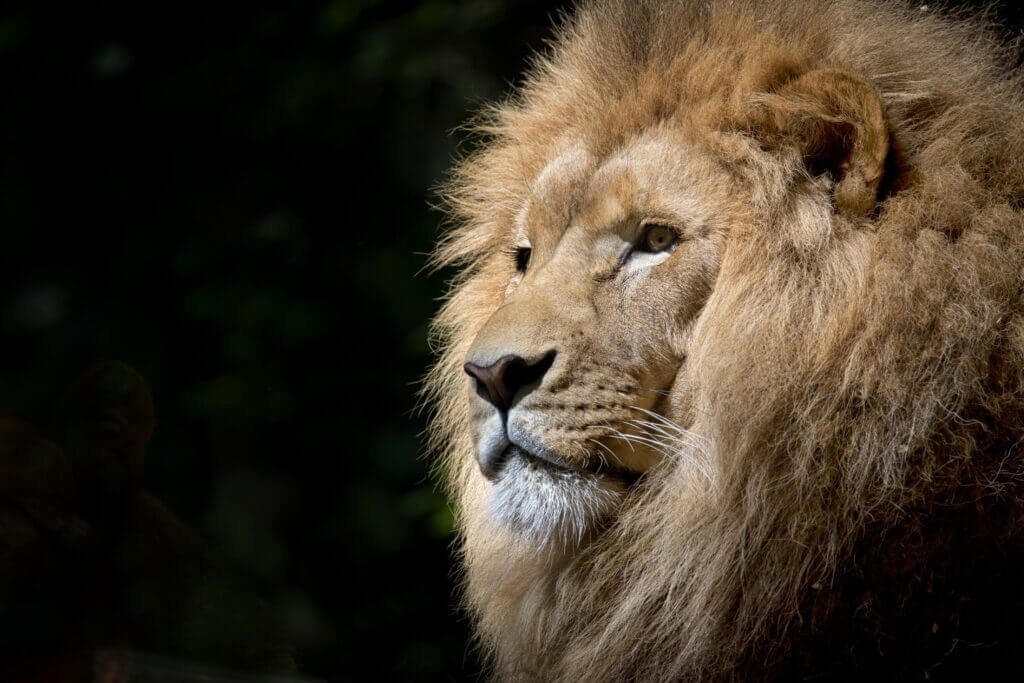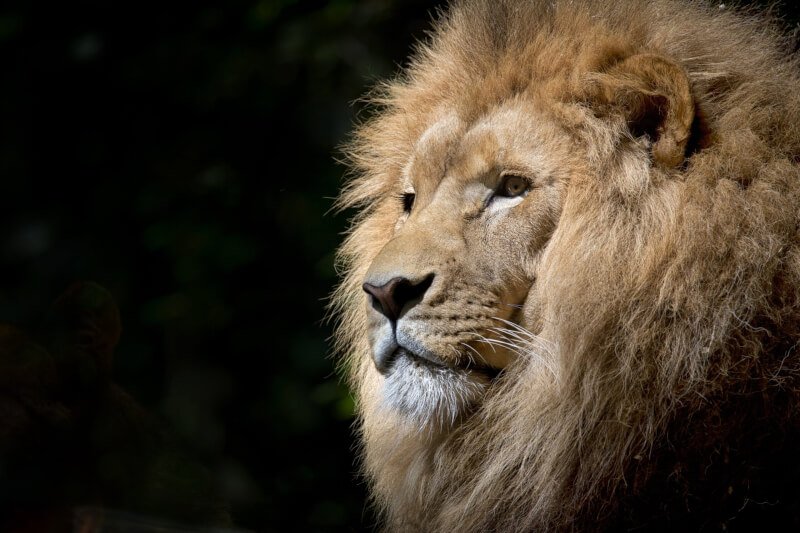Curious about how snakes protect themselves from potential threats? This article explores the fascinating world of snake defenses against predators. From their unique camouflage abilities to jaw-dropping venomous bites, you’ll gain a deeper understanding of the incredible tactics that snakes employ to defend themselves in the wild. Whether you’re a reptile enthusiast or simply intrigued by nature’s marvels, prepare to be captivated by the myriad of strategies these slithering creatures have developed to survive and thrive in their environments.
Camouflage
Snakes have evolved a remarkable ability to blend into their surroundings, known as camouflage. Their coloration, pattern, and texture all play a part in their ability to remain hidden from predators.
Coloration
Snakes have a wide range of colors, allowing them to blend in with their surroundings. Some snakes have vibrant colors that match their environment, such as green snakes blending in with foliage or brown snakes camouflaging in sandy or rocky terrain. Others have more subtle colors that help them hide in leaf litter or on tree bark. The ability to change color, known as “cryptic coloration,” further enhances a snake’s camouflage, enabling them to adapt to different background environments.
Pattern
In addition to their coloration, snakes have intricate patterns that further aid in their camouflage. These patterns can mimic the natural patterns found in their habitat, such as the diamond-shaped blotches on a diamondback rattlesnake resembling the patterns of leaves or rocks. Some snakes have patterns that break up their outline, making it harder for predators to spot them. For example, many snake species have a series of dark stripes or spots running along their body, which helps to disrupt their silhouette and blend in with the environment.
Texture
The texture of a snake’s skin also contributes to their camouflage. Snakes often have scales that are rough or ridged, allowing them to better blend in with rough surfaces such as tree bark or rocky terrain. Some snakes also have keeled scales, which have tiny ridges along their surface, providing an additional layer of camouflage by breaking up their appearance and helping them blend in even further.
Warning Displays
When camouflage fails and a snake is confronted by a predator, they have a variety of warning displays to deter potential attackers. These warning displays indicate to predators that the snake is dangerous and should be approached with caution.
Rattling
Rattling is a distinctive warning display used by certain species of venomous snakes, such as rattlesnakes. These snakes have a specialized rattle at the end of their tail, which they will shake rapidly when threatened. The sound produced acts as a warning signal, alerting predators to the snake’s presence and venomous nature. The distinct sound of a rattlesnake’s rattle is often enough to make predators, including humans, think twice before approaching.
Hissing
Hissing is another warning display commonly used by snakes. When threatened, snakes will forcefully exhale air, producing a loud hissing sound. This display is often accompanied by inflating the snake’s body or flattening its neck, making it appear larger and more intimidating. The hissing sound, coupled with the snake’s aggressive posture, sends a clear warning to predators, signaling that the snake is ready to defend itself if necessary.
Head flattening
When faced with a potential threat, some snakes will flatten their heads, giving them a distinct triangular shape. This display, known as head flattening, serves as a warning to predators. By making their heads appear larger, snakes can intimidate predators and discourage them from attacking. Additionally, head flattening can enhance a snake’s defensive capabilities, as it allows them to strike farther and more accurately if necessary.
Venomous Bites
Venomous snakes possess a potent defense mechanism in the form of their venomous bites. The venom is a cocktail of toxins designed to immobilize or kill their prey, but it is also an effective deterrent against predators.
Types of Snake Venom
Snake venom can vary in composition and effect. Some venoms are primarily hemotoxic, causing damage to the blood vessels, tissues, and organs of the victim. Others are neurotoxic, targeting the nervous system and causing paralysis. Some snakes possess venom that combines both hemotoxic and neurotoxic properties to maximize their effectiveness. The specific type of venom a snake possesses depends on its evolutionary adaptation to its environment and preferred prey.
Delivery of Venom
Venomous snakes have specialized fangs designed to inject their venom into their prey or predators. When threatened, a venomous snake will strike at its attacker, delivering a swift and accurate bite. The fangs connected to venom glands at the back of the snake’s mouth allow the venom to be injected into the target. Once injected, the venom quickly takes effect, immobilizing or incapacitating the predator. This defense mechanism serves to protect the snake and ensure its survival.
Constriction
Some non-venomous snakes have developed an alternative defense mechanism known as constriction. Constrictor snakes, such as pythons and boas, use their powerful muscles to wrap around their prey tightly, suffocating them.
Technique
When a constrictor snake detects potential prey, it will strike and bite, latching onto the prey with its sharp teeth. Once the prey is secured, the snake will begin to coil its body around the prey, applying pressure and cutting off its blood flow and air supply. This process can cause the prey to lose consciousness or suffocate within minutes.
Targeted Prey
Constrictor snakes typically target small to medium-sized prey, such as rodents, birds, and even other reptiles. Their ability to constrict allows them to overpower and dispatch prey that may be larger than themselves. This defense mechanism not only aids in acquiring food but also serves as a deterrent against potential predators. The threat of being wrapped tightly and suffocated can discourage predators from attacking constrictor snakes, ensuring their safety.

Mimicry
Mimicry is a fascinating defense strategy employed by certain snake species. Through their appearance, harmless snakes mimic the characteristics of venomous snakes, deterring potential predators.
Vivid Colors and Patterns
Some harmless snake species have adopted vibrant colors and patterns that closely resemble those of venomous snakes in their environment. These visual cues act as a deterrent, as predators learn to associate such colors and patterns with danger and potential harm. By mimicking venomous snakes, harmless snakes gain a level of protection, as predators are less likely to risk an encounter with a potentially dangerous snake.
Harmless Species Mimicking Venomous Snakes
There are numerous examples of harmless snake species mimicking venomous snakes. One well-known example is the milk snake, which closely resembles the venomous coral snake. Their similar color pattern, characterized by bands of red, yellow, and black, warns predators to stay away. This mimicry not only serves as a means of protection for harmless snakes but also benefits predators, as they avoid potential harm by mistaking the mimic for a venomous snake.
Retreating and Hiding
When all else fails, snakes have developed various techniques for retreating and hiding from predators.
Quick Escape
Snakes are incredibly agile and can make quick escapes by slithering away rapidly. They can make use of their streamlined bodies and unique mode of locomotion to quickly disappear into their environment. Their ability to navigate through narrow crevices or dense undergrowth enables them to reach safety and avoid potential danger.
Burrowing
Many snake species have adapted to burrowing lifestyles, allowing them to retreat underground when threatened. Their ability to dig into the soil or burrow into leaf litter provides them with a safe hiding place inaccessible to most predators. Snakes that make burrows also benefit from the stable temperature and humidity levels underground, creating a favorable environment for them to reside in.
Bushes and Tall Grass
Snakes often take advantage of their environment by hiding in bushes, shrubs, or tall grass. The dense foliage provides ample cover, making it difficult for predators to locate them. Snakes can rely on their camouflage to blend in seamlessly with their surroundings, increasing their chances of remaining concealed and avoiding detection.
Body Shape and Structure
Snakes’ unique body shape and structure contribute to their overall defenses against predators.
Flexible Jaw
Snakes possess an exceptionally flexible jaw structure that allows them to consume prey larger than their head. This ability is a significant advantage when it comes to survival, as it means they can feed on a wide range of prey. Additionally, the flexible jaw allows snakes to unhinge their mouths, enabling them to bite and swallow prey without endangering themselves.
Elongated Body
The elongated body of a snake offers several defensive benefits. Firstly, it allows snakes to move swiftly and silently, making it harder for predators to detect them. Secondly, their elongated body shape allows them to squeeze into narrow crevices or hide in tight spaces, aiding in their ability to escape from predators. Lastly, the elongated body provides an efficient design for capturing and securing prey, contributing to the snake’s survival.
Scales
The scales covering a snake’s body serve multiple functions. Firstly, they provide protection from predators by forming a barrier against physical harm. Secondly, they assist in the snake’s movement, reducing friction as they slither across various surfaces. Additionally, scales aid in a snake’s camouflage, with their texture and coloration helping them blend seamlessly into their environment.
Vertical Pupils
A snake’s vertical pupils contribute to their defensive abilities. The vertical shape allows snakes to have a wider field of view, enabling them to detect potential predators more easily. This enhanced peripheral vision aids in their ability to perceive movement and potential threats, giving them an advantage when it comes to evading danger.
Habitat Choice
Snakes have a keen sense of their preferred environments and possess several strategies to choose habitats that minimize the risk of encountering predators.
Preferential Environments
Different snake species have specific preferences for their habitat. Some snakes thrive in aquatic environments, such as rivers or swamps, where they can swim freely and take advantage of abundant prey. Others prefer arid desert landscapes or dense forests, relying on their camouflage to remain hidden from potential predators. By selecting environments that suit their specific needs, snakes can reduce the likelihood of encountering predators.
Avoidance of Predators
Snakes also actively avoid areas where predators are known to frequent. Through experience and instinct, they learn to steer clear of regions inhabited by predatory animals, minimizing the risk of a dangerous encounter. By choosing habitats that predators are less likely to inhabit, snakes can increase their chances of survival and reduce the need for defensive responses.
Escape Techniques
When confronted by predators, snakes have several escape techniques at their disposal to quickly and efficiently evade danger.
Speed
Despite their lack of limbs, snakes can move swiftly when threatened. Their serpentine movement allows them to navigate various terrain, even in confined spaces. By rapidly slithering away, snakes can outpace many predators, making it difficult for them to capture or maintain pursuit.
Climbing
Snakes are exceptional climbers, capable of scaling trees, rocks, and other vertical surfaces. Their muscular bodies and ability to grip using scales allow them to navigate both horizontal and vertical terrain with ease. By climbing out of a predator’s reach, snakes can avoid direct confrontation and find safety in elevated locations.
Swimming
Many snake species are proficient swimmers, capable of gliding through water with remarkable efficiency. When threatened, snakes can retreat into bodies of water, submerging themselves to evade predators. Swimming provides them with an escape route that predators may struggle to follow, granting them a higher chance of survival.
Defense Posture
When all else fails and a snake is cornered, they will adopt various defense postures to warn off predators and prepare for confrontation.
Coiling
Coiling is a defensive posture utilized by snakes that involves curling their body into an S-shape or looping it into multiple circles. This posture makes the snake appear larger and more intimidating, acting as a visual deterrent. By coiling, snakes can also prepare to strike if necessary, maximizing their defensive capabilities.
Head Raised
When threatened, snakes will often raise their heads off the ground, lifting themselves into an elevated defensive position. By doing so, they improve their field of view, enabling them to monitor the movements of their attackers more effectively. This defensive posture serves as a warning to predators, indicating that the snake is ready to defend itself if necessary.
Striking
If all else fails and a predator continues to approach, a snake may resort to striking as a last line of defense. Snakes have lightning-fast reflexes and can deliver a swift and accurate strike with their fangs. This defensive behavior, combined with venomous bites in some species, can be a powerful deterrent, inflicting harm on predators and discouraging further aggression.
In conclusion, snakes have developed an array of defensive strategies to protect themselves from predators. Through their remarkable camouflage, warning displays, venomous bites, constriction techniques, mimicry, retreating and hiding behaviors, unique body structure, habitat choice, escape techniques, and defensive postures, snakes have evolved to survive and thrive in a world filled with potential threats. These defenses highlight the incredible adaptations and survival skills of these fascinating creatures.


